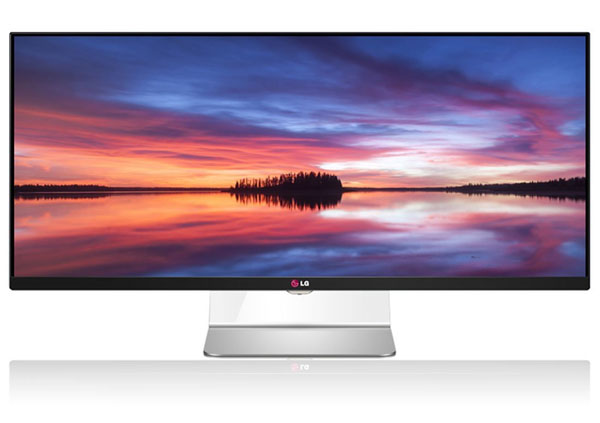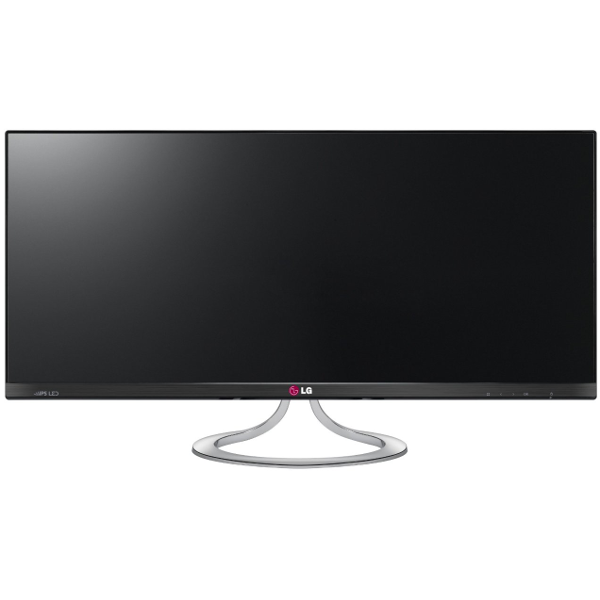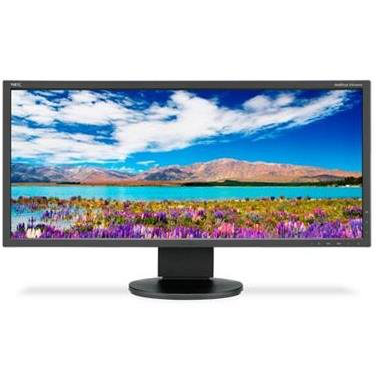LG 34UM95 34-Inch Ultra-Wide QHD Monitor Review
When we looked at 29-inch ultra-wide displays last year, we asked for greater size and more pixels. LG answers that request with its 34UM95, a 34-inch panel with a resolution of 3440x1440. Today we run it through our performance and usability analysis.
LG 34UM95 34-Inch Ultra-Wide QHD Monitor Review

Last year LG introduced the first ultra-wide monitor we’d ever seen, the 29EA93. With a 21:9 aspect ratio, the screen tried answering a question we weren’t sure anyone was asking. But after reviewing two competing displays based on the same panel, NEC’s EA294WMi and AOC’s Q2963PM, we came away with some fresh ways to work with this new concept in monitors.
My own experience, along with feedback from the Tom's Hardware community, told me that there were two main problems with the 2560x1080, 29-inch form factor. Number one was a lack of pixel density. With only 1080 pixels of vertical resolution, it proved difficult to use for Web browsing and word processing. The second issue was overall screen size. Even if it had greater pixel density, a 29-inch ultra-wide is only 11.4 inches in height, resulting in too-little screen real estate for most tasks other than gaming or movie-watching.
Today we get our first look at LG’s second-generation ultra-wide display, the 34UM95, which purports to address at least one of those two shortcomings.
| MSRP | $1000 |
|---|---|
| Panel Type | AH-IPS |
| Backlight | W-LED, edge array |
| Screen Size | 34-inch |
| Max Resolution | 3440x1440 |
| Max Refresh Rate | 60 Hz |
| Aspect Ratio | 21:9 |
| Native Color Depth | 10-bit (8-bit w/FRC) |
| Native Gamut | sRGB |
| Response Time (GTG) | 14 ms |
| Brightness | 320 cd/m2 |
| Speakers | - |
| VGA | - |
| DVI | - |
| DisplayPort v1.2 | 1 |
| HDMI v1.4 | 2 |
| Thunderbolt | 2 |
| Audio In | - |
| Headphone | 1 |
| USB | v3.0 - 1 up, 3 down |
| Media Card Reader | - |
| Panel DimensionsW x H x D w/base | 32.7 x 18.5 x 6.8 in824 x 466 x 171 mm |
| Panel Thickness | 1.9 in / 48 mm |
| Bezel Width | .4-.8 in / 11-20 mm |
| Weight | 17 lbs / 7.7 kg |
| Warranty | One year |
First (and most obviously), LG takes a major step in the right direction with increased size and resolution. Now you get the same screen height as a 27-inch QHD display and the very same 109 PPI density. It wields all of the same advantages, plus a bonus 7.75 inches of screen width. If you were considering a dual-screen setup before, a display like this one warrants a serious look.
Whether you have a high-performance gaming rig begging for a multi-monitor configuration or you just want some extra screen real estate for productivity-oriented workloads, the biggest bummer about using two or three monitors is the bezel interruption between panels. Even displays with no bezel still have a frame around the picture. Current LCD technology seems to have no solution, so we’ve accepted the compromise for now.
Really, then, the decision between two 27-inch QHD screens versus one 34-inch ultra-wide comes down to total screen area and how badly you want to get rid of the bezel. Two 27-inch 16:9 displays yield 623 square inches, while the 34-inch ultra-wide totals 419. Now that the 34UM95 offers the same pixel density, it becomes a more fair comparison.
Aside from the ultra-wide aspect ratio, this is a fairly typical IPS-based monitor. The color gamut is sRGB with a White-LED backlight. To facilitate better utilization of the extra width, an application is included to help manage window sizing in up to four zones on the screen. The HDMI inputs are MHL-compatible, so you can easily window the output from a phone or tablet along with your computer desktop.
Stay On the Cutting Edge: Get the Tom's Hardware Newsletter
Get Tom's Hardware's best news and in-depth reviews, straight to your inbox.
Along with our usual performance benchmarks, we’ll test the usability of the 34UM95. It promises to be a unique experience. Let’s take a closer look.
Current page: LG 34UM95 34-Inch Ultra-Wide QHD Monitor Review
Next Page Packaging, Physical Layout, And Accessories
Christian Eberle is a Contributing Editor for Tom's Hardware US. He's a veteran reviewer of A/V equipment, specializing in monitors. Christian began his obsession with tech when he built his first PC in 1991, a 286 running DOS 3.0 at a blazing 12MHz. In 2006, he undertook training from the Imaging Science Foundation in video calibration and testing and thus started a passion for precise imaging that persists to this day. He is also a professional musician with a degree from the New England Conservatory as a classical bassoonist which he used to good effect as a performer with the West Point Army Band from 1987 to 2013. He enjoys watching movies and listening to high-end audio in his custom-built home theater and can be seen riding trails near his home on a race-ready ICE VTX recumbent trike. Christian enjoys the endless summer in Florida where he lives with his wife and Chihuahua and plays with orchestras around the state.
-
rantoc 4k gaming is amazing but demand alot from the computer hardware. Just got a dell 3214 and its hard to describe how much better the picture/emersion is with the way higher definition in the picture quality and still came from descent 2560x1600 before that.Reply
Playing on "full" hd (LD? Low definition) feels like a joke once you get to know uhd/4k -
wtfxxxgp Rantoc, what does your comment have to do with the article? Seems to me that you were waiting for an opportunity to brag about your new monitor... Glad you got that out of your system. lolReply
With regards to this monitor...I LOVE the looks...very elegant. I think the price tag is fitting as well - it has great resolution and there are still plenty of people who are gaming on 60hz displays that may have just enough GPU power to actually game at this thing's native resolution, albeit with slightly lower settings. GG LG! -
xPandaPanda I have this monitor. Because of it's cinema format, market age, lower production numbers, and early adoption as competitors haven't offered this yet, it is reasonable to think this monitor would cost this much--a lot.Reply
It would have been nice to include what revision this is, because LG is aware of uniformity issues, which is why the product was largely on backorder and a Rev.2 is in place (but Rev. 2 didn't fix the problem either). My first one had a glaring Uniformity problem, but LG is cool and offered an advanced exchange. The new one has some uniformity problem, but it is very 'livable' and discrete.
Overall, I am pleased with this product. I have a single 780 to push this and it works nicely. If I got a 4k monitor, I'd have performance issues as the GPU as a whole sector is behind.
-
eklipz330 as a pc gamer who has been playing for ~15 years, i have to say that this is one of the biggest changes that i've seen on the pc platform. this is a big step towards bringing pc back to relevancy. it's something that will be held to acclaim in productive and gaming environments. in fact, the only thing that i'm surprised that they didn't do is make it curved, simply because when a user sets up a multi-monitor setup, they set the outside monitors at an angle. this makes curved monitor solutions make sense more so than tvs, especially since curved monitors benefit solo users the most. im shocked they didnt make it curved. probably going to cash in next year on that.Reply
seriously though, pc monitors have been lacking for some years now, falling behind in innovation and technology in general(phones have been jacking up their screen quality year after year, we've been stuck since like 2005). i bet 21:9 screens will have the biggest penetration on PCs. -
josejones Why still the old HDMI 1.4 instead of HDMI 2.0 and DisplayPort 1.2 instead of the new 1.4 ???Reply


